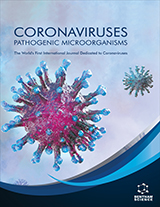Abstract
Background: It is against the background of the emerging incidence of coronavirus pandemic in Nigeria and the need for its management that this study adapts the gravity model for predicting the risk of the disease across states of the country.
Methods: The paper relied on published government data on population and gross domestic product, while the distance of town to the nearest international airport was also obtained. These data were logtransformed and further used in the calculation of gravity scores for each state of the federation.
Results: The study discovered that with the gravity score ranging from 2.942 to 4.437, all the states of the federation have the risk of being infected with the pandemic. Meanwhile, Ogun State (4.837) has a very high risk of being infected with the disease. Other states with high risks are Oyo (4.312), Jigawa (4.235), Niger (4.148), and Katsina (4.083). However, Taraba State has the least infection risk of pandemic in Nigeria. Factors influencing the risk level of the pandemic are proximity, the porous boundary between states, and elitism.
Conclusion: The paper advocates border settlement planning, review of housing standards, and advocacy for sanitation in different states. It, therefore, concludes that adequate urban planning in unison with economic and epidemiology techniques will provide a strong strategy for the management of the disease.
Keywords: Covid-19, gravity model, urban planning, Nigeria, mobility, disease transmssion.
[http://dx.doi.org/10.1016/j.epidem.2018.05.007] [PMID: 29853411]
[http://dx.doi.org/10.1371/journal.pone.0001790] [PMID: 18335060]
[http://dx.doi.org/10.1016/j.pt.2018.07.004] [PMID: 30049602]
[http://dx.doi.org/10.1038/nature04795] [PMID: 16642006]
[http://dx.doi.org/10.1038/nature06958] [PMID: 18528393]
[http://dx.doi.org/10.1016/S0140-6736(20)30850-3]
[http://dx.doi.org/10.2190/HS.37.4.j] [PMID: 18072319]
[http://dx.doi.org/10.1098/rspb.2009.1605]
[http://dx.doi.org/10.1371/journal.pone.0001941]
[http://dx.doi.org/10.1016/j.chom.2017.12.010.]
[http://dx.doi.org/10.1111/j.1469-0691.2008.02694.x] [PMID: 19220349]
[http://dx.doi.org/10.1126/science.1125237] [PMID: 16574822]
[http://dx.doi.org/10.3390/ijerph8083134] [PMID: 21909295]






























